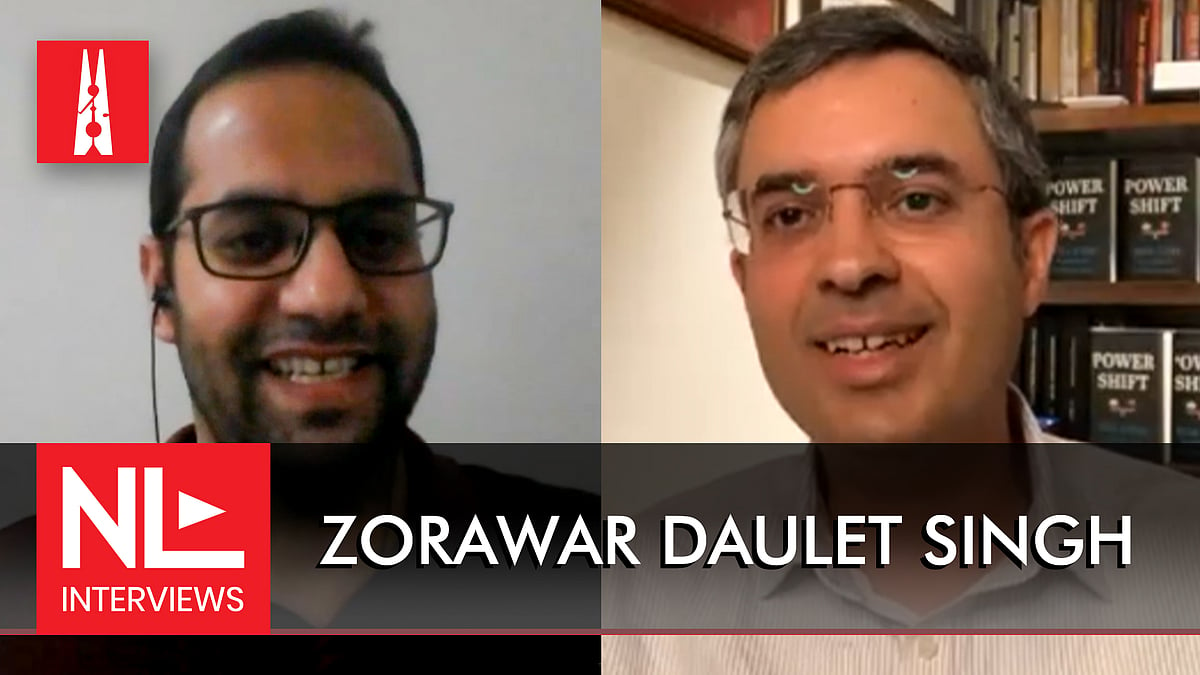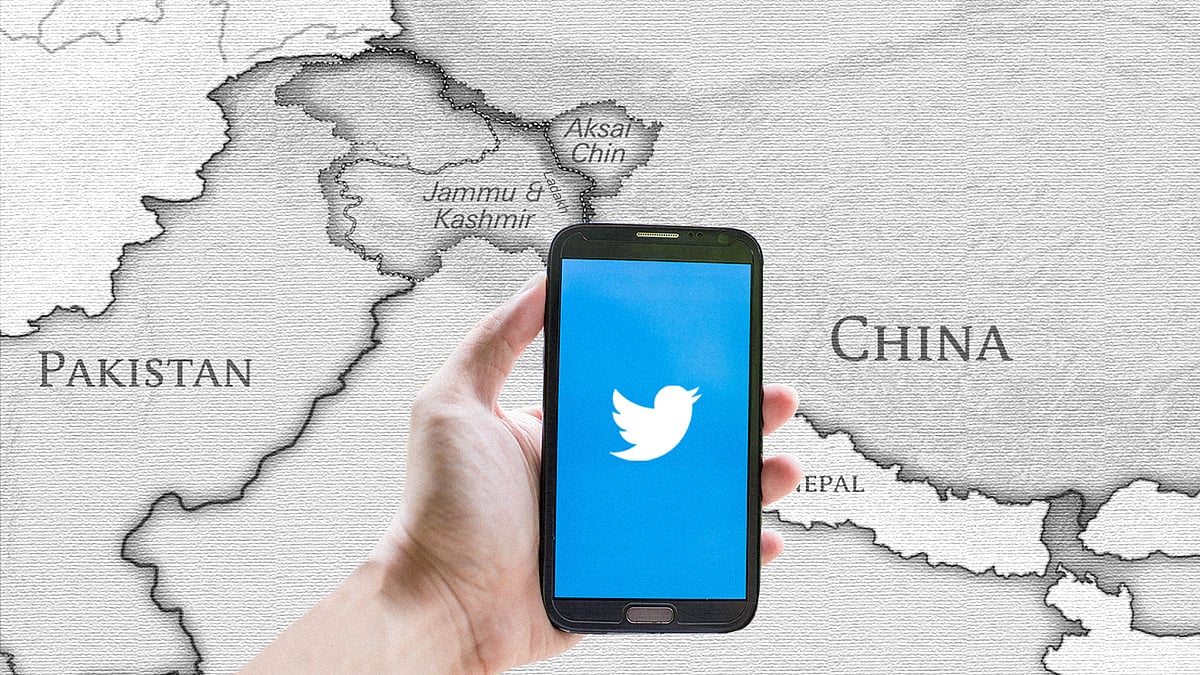Between the US, Russia and China: Understanding India’s tightrope walk on the Ukraine crisis
India’s response is of realist pragmatism to avoid estranging any major power.
In recent weeks, the Ukraine crisis has brought testing times to the delicate balance India seeks to strike in its ties with big powers.
The standoff between Russia and US-led western powers – triggered by Russia’s move to deploy around 10,000 Russian troops near Ukraine’s borders – poses diplomatic riddles for even faraway regional powers like India. In weighing the stakes, India has attempted a tightrope walk by abstaining from voting in the US-convened meet of the United Nations Security Council on the Ukraine crisis. India also refused to comment on the issue at the Quad meet in Melbourne last week.
India’s response shows elements of realist pragmatism, though some analysts have also viewed it as an exercise in fence-sitting while engaging with either side of the fence. The nature of India’s stand and the factors influencing it, however, are as much in sync with its positioning over many decades as they are shaped by the immediate matrix of global power play – particularly its East European and Eurasian theatres.
The demands of taking a stand are clear. India seeks to guard its seven decade old ties with Russia, the successor state to the erstwhile Soviet Union of the Cold War era, while also further cementing and diversifying its ties with the US, a partnership it worked on in the last three decades of the post Cold War phase. This balancing act, however, also has a third element that must be increasingly factored in: how it will play out with the large, adversarial presence of the Chinese power in India’s northern neighbourhood.
More often than not, India has navigated itself out of big power tussles where it hasn’t much at stake. In the Cold War phase, India’s stated position of non-alignment, even though with an obvious tilt towards the Soviet Union, was diplomatically geared to avoid estranging any major power far enough to seek substantial mutuality of ties. In later years, the many expedient detours of the moralist-sounding non-alignment was more realistically rephrased as India’s strategic autonomy.
In a more immediate scenario, India, even with stagnant ties with Russia and an altered view of its relations with western powers, has enough reasons to not ruffle Moscow’s feathers. In March 2014, India had kept a low profile on the Ukraine issue on the international stage. At the time, the UPA government led by Dr Manmohan Singh had refused to join western powers in condemning Russia’s intervention in Crimea. India’s decision was praised by Russian president Vladimir Putin in the Russian parliament for its objective assessment of Moscow’s role in Ukraine. The then national security adviser Shivshankar Menon had further elaborated that the Ukraine issue was related to “legitimate Russian and other interests” that call for discussion and resolution.
Besides diplomatic factors, India’s stand on the Russian move was also understood as an assessment of Russian insecurities vis-à-vis its lost rim land, which is now a cluster of neighbours in East Europe – either part of or on the verge of joining the North Atlantic Treaty Organisation, the foremost military alliance. Putin’s attitude of “defensive aggressiveness”, to borrow historian Stephen Kotkin’s phrase, was understandable from New Delhi’s strategic perch. So was the view about the Russian imperative of securing a sphere of influence.
However, India has been careful about keeping its distance from Russian moves to use the referendum to give legitimate cover to the annexation of Crimea.
That explains why India has been aware of the scenario, where its stand on the territorial “unity and integrity” of sovereign countries would make it difficult to go with Russia’s efforts to recognise the regions claiming secession from eastern Ukraine. In fact, supplementing its statement on Ukraine almost eight years ago, India had reiterated its adherence to the principle of the “unity and integrity” of sovereign nations. This was an explanatory move when a separatist group in Kashmir had been drawing equivalence, even if false, with the Crimea situation.
Six years later, however, India was keen on not letting Russia believe that it was willing to buy the Ukraine government’s claims in an international forum. In November 2020, India voted against the Ukraine sponsored resolution in the UN General Assembly which made allegations of human rights violations in Crimea.
But in its latest response in the UN Security Council, India’s statement was careful in covering other stakeholders in the crisis. India batted for a diplomatic solution that considers “the legitimate security interests of all countries and aimed towards securing long term peace and stability in the region and beyond”. India seems alert to understanding the limits of “defensive aggressiveness” in international behaviour, more so of the major powers.
This caution, however, should not allow India to lose sight of the continuing relevance of close ties with Russia. India has strong and pragmatic reasons to not lose an old ally, particularly in a challenging phase of New Delhi’s security needs.
Russia continues to be India’s top military supplier and, by different estimates of the share of supply, Russia provides 60 to 70 percent of India’s defence equipment. Despite India's diversification of its defence purchases from other suppliers, the Russian presence looms large. In recent years, India has even brushed aside American objections to its decision of purchasing S-400 defence missile systems from Russia. The sword of possible US sanctions still hangs over India’s head over the S-400 deal, something India is willing to risk.
In short, a steady defence supply system with Russia at helm is important as India counters the security challenges mounted by Chinese military adventurism in the north and continuing hostility from Pakistan. In all likelihood, India wouldn’t want irritants like the Ukraine crisis to come in the way of defence supplies with Russia.
Amidst these factors at play, India would still prefer a diplomatic way out of the Ukraine crisis.
First, as C Raja Mohan has pointed out in his analysis in Foreign Policy, a military escalation on the Ukraine border would mean chaos in global gas and oil markets, where Russian companies play a very influential role. This is why recovering economies in other parts of the world don’t want to exert much pressure on Russia. In India, as the government seeks a resurgence in economic growth and restricting inflation to manageable limits, the threat of oil price volatility could be bad news for the current political dispensation.
Second, the escalation in Ukraine could make Europe the theatre of geopolitical focus for the US – a possibility that India wouldn’t want at a time when it wants the Chinese hegemonic designs in Asia to find an effective counter from the western allies. Even with the emergence of the new Russia-China bonding on some issues of geopolitical interest, India is alert to the fact that the two big powers can’t be deciding each other’s agenda on a wide range of issues. If issues of convergence exist, there are enough reasons to see why Russians would diverge with China on a number of other geopolitical concerns. Russia has, for instance, exercised neutrality in viewing China’s moves in the South China Sea.
In the flux of the Ukraine crisis, India has done well to seek strategic autonomy through a tightrope walk. The shifting sands of geopolitics ask for a pragmatic stock-taking, a process which has defined India’s decision to avoid estranging Russia. But, like many recovering economies around the world, India would still hope that a de-escalation saves it from a potential disruption in global energy supplies. To add to that, New Delhi would want Moscow to not distract western powers from exclusively directing their attention to Beijing’s designs.
 NL Interview: Zorawar Daulet Singh on how India can tackle China
NL Interview: Zorawar Daulet Singh on how India can tackle China How a ‘disinformation network’ on Twitter added to the tension surrounding the Galwan Valley conflict
How a ‘disinformation network’ on Twitter added to the tension surrounding the Galwan Valley conflict